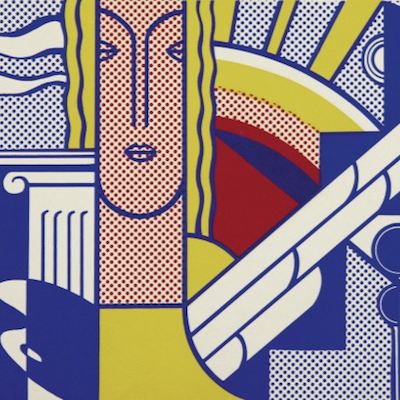
Details
Artist
Styles
Lithograph in colors on Japon nacre - Printed by Arts-Litho, Paris and published by Éditions de la Différence, Paris. // Alexander Calder’s Untitled (from the La mémoire élémentaire portfolio) (1976) is a lithograph that epitomizes his fascination with geometric forms and vibrant colors. This print features a dynamic arrangement of pyramidal shapes in bold hues of red, blue, yellow, black, and orange, creating a lively interplay of color and form. Set against a neutral background, the pyramids appear to be scattered across the composition, each shape outlined with thick black lines that add definition and contrast. Calder’s use of primary and secondary colors emphasizes his modernist approach, transforming simple geometric elements into a visually stimulating and playful composition. Printed on Japon nacré paper by Arts-Litho in Paris and published by Éditions de la Différence, this piece demonstrates Calder’s ability to translate the movement and balance seen in his sculptures into two-dimensional works, preserving the sense of motion and spontaneity.
Hommage á Euclide / Hommage to Euclid from La Memoire Elementaire, 1976
form
Medium
Size
51.4 x 71.8 cm
- Inches
- Centimeters
Edition
Price
- USD
- EUR
- GBP
Details
Artist
Styles
Lithograph in colors on Japon nacre - Printed by Arts-Litho, Paris and published by Éditions de la Différence, Paris. // Alexander Calder’s Untitled (from the La mémoire élémentaire portfolio) (1976) is a lithograph that epitomizes his fascination with geometric forms and vibrant colors. This print features a dynamic arrangement of pyramidal shapes in bold hues of red, blue, yellow, black, and orange, creating a lively interplay of color and form. Set against a neutral background, the pyramids appear to be scattered across the composition, each shape outlined with thick black lines that add definition and contrast. Calder’s use of primary and secondary colors emphasizes his modernist approach, transforming simple geometric elements into a visually stimulating and playful composition. Printed on Japon nacré paper by Arts-Litho in Paris and published by Éditions de la Différence, this piece demonstrates Calder’s ability to translate the movement and balance seen in his sculptures into two-dimensional works, preserving the sense of motion and spontaneity.
- Recently Added
- Price (low-high )
- Price (high-low )
- Year (low-high )
- Year (high-low )
Alexander Calder
Le Piège (from La Memoire Elementaire), 1976
Limited Edition Print
Lithograph
USD 9,700
Alexander Calder
Hommage á Euclide / Hommage To Euclid From La Memoire Elementaire, 1976
Limited Edition Print
Lithograph
USD 9,700
Alexander Calder
Untitled (from The La Memoire Elementaire), 1976
Limited Edition Print
Lithograph
USD 2,600
Alexander Calder
Taches De Rousser (from La Memoire Elementaire), 1976
Limited Edition Print
Lithograph
USD 9,700
Alexander Calder
Red, Yellow And Blue Coral With Shells , c. 1970
Limited Edition Print
Lithograph
Inquire For Price
Alexander Calder
McGovern For McGovernment , 1973
Limited Edition Print
Lithograph
Inquire For Price
Alexander Calder
Le Bateau Lavoir (The Laundry Boat), 1969
Limited Edition Print
Lithograph
USD 4,000
Alexander Calder
Our Unfinished Revolution: Animals, 1976
Limited Edition Print
Lithograph
Inquire For Price
Alexander Calder
Le Point De Non Retour (from La Memoire Elementaire), 1976
Limited Edition Print
Lithograph
USD 9,700
Alexander Calder
La Pointe Du Progrès (from La Memoire Elementaire), 1976
Limited Edition Print
Lithograph
USD 9,700
Alexander Calder
Our Unfinished Revolution: Octopus/Squid, 1975-1976
Limited Edition Print
Lithograph
USD 9,700
Alexander Calder
Untitled (Spirals And Forms), 1965
Limited Edition Print
Lithograph
Currently Not Available
What is late modernism?
Late Modernism refers to the continuation and evolution of Modernist principles in art, architecture, and literature from the mid-20th century into the late 20th century. This movement maintains a focus on form, abstraction, and the rejection of traditional styles, but it often incorporates more complexity and ambiguity compared to early Modernism. Late Modernism explores themes such as alienation, identity, and the fragmentation of reality, reflecting the social and cultural shifts of the post-war period. It is seen in the works of architects like Louis Kahn and artists like Francis Bacon, who pushed the boundaries of Modernism while responding to the changing world around them.





























































